Easy French canelé recipe (also known as Cannelés) without beeswax. Made with vanilla, rum, butter and eggs, discover their unique taste and origin. This authentic French recipe is an extract from my 2nd pastry recipe book, 'Teatime in Paris' (2015).
Another success Jill. These are just delightful. We decided we preferred them dark and really caramelised on the outside. My other half said they were like the perfect chip, crispy on the outside and lovely and soft in the middle.
Denny
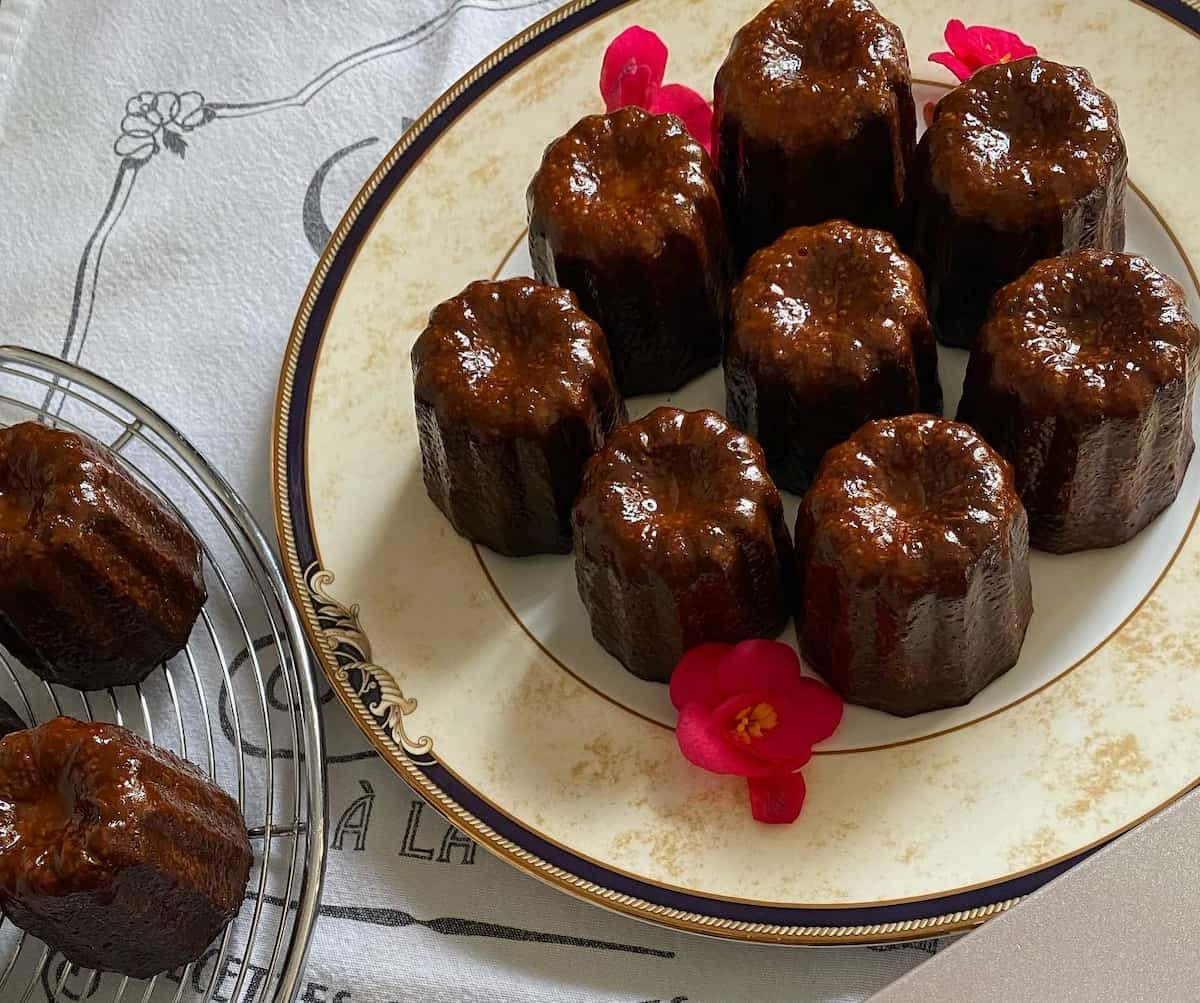
Canelés - How did they Originate?
As egg whites were used to clarify French Bordeaux wines, the local nuns of the Couvent des Annonciades saved the yolks and with them invented canelas in the 18th century. Since Bordeaux was a major port, rum just happened to be handy, along with tropical vanilla.
Over the years these vanilla and rum cakes took on various different looks and names around the Aquitaine region, such as canole and canauliers.
Is it Canelé or Cannelé?
It's funny to see that even the French are sometimes confused how to spell this: both canelé and cannelé de Bordeaux are used.
Apparently, as of 1985, one 'n' was officially dropped by the Confrérie de Canelés de Bordeaux (Brotherhood of Canelés). Don't you love how there's a formal protective clan for these French cakes?
Now its true identity can be found in famous pâtisseries around Bordeaux (Lemoine, Baillardran, Luc Dorin, La Toque Cuivrée, San Nicolas) and the rest of France - still with both spellings.
How do you pronounce canelé?
It's the same for both spellings: "can-eu-lay".
Note that their name shouldn't be confused with the French word for cinnamon, which is cannelle (pronounced 'kan-nelle').
As both spellings are still official, they're interchangeable.
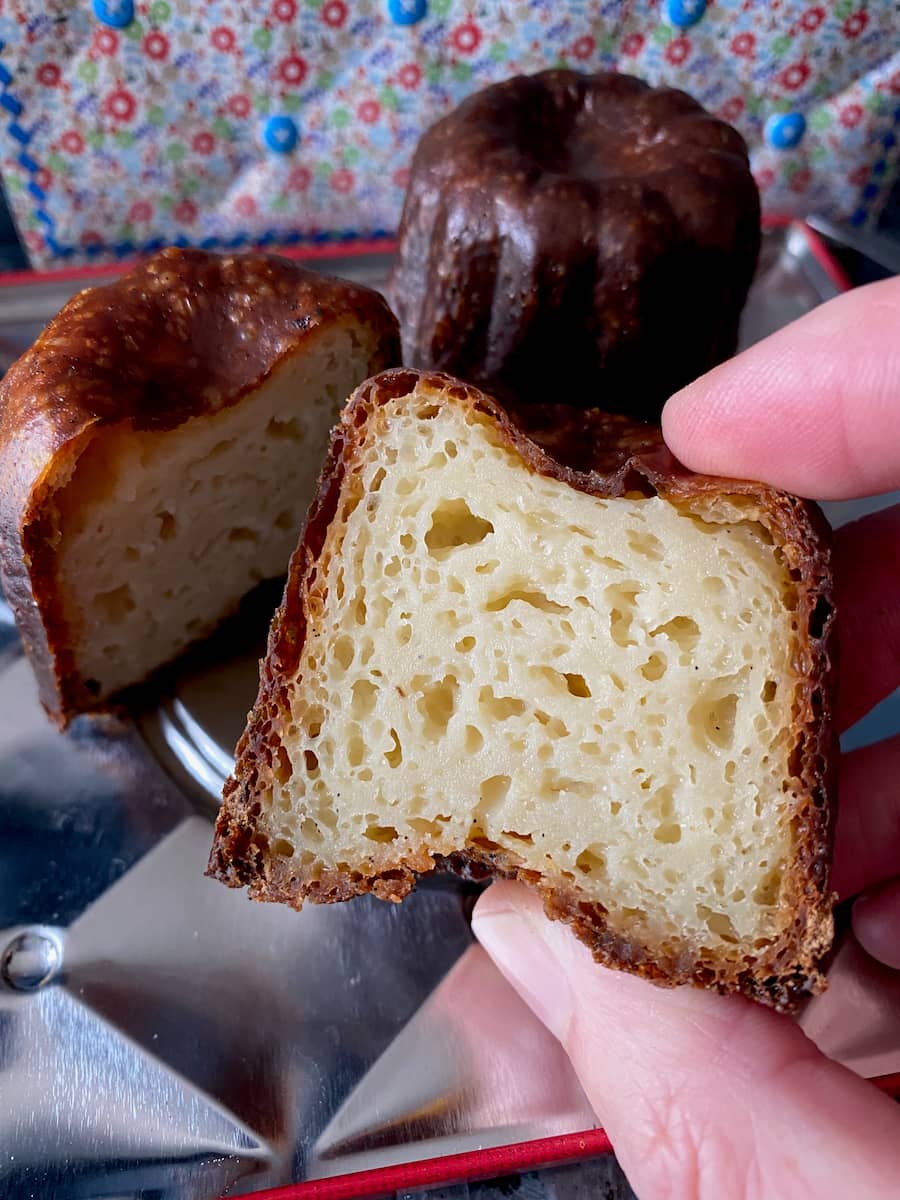
What do Canelés Taste Like?
What makes the canelé so delicious is its extra dark, caramelised crispy outside while the soft interior is bright, custard yellow, airy and spongy firm.
Traditionally fragranced with good vanilla pods/beans, it's also given the finishing touch with dark rum.
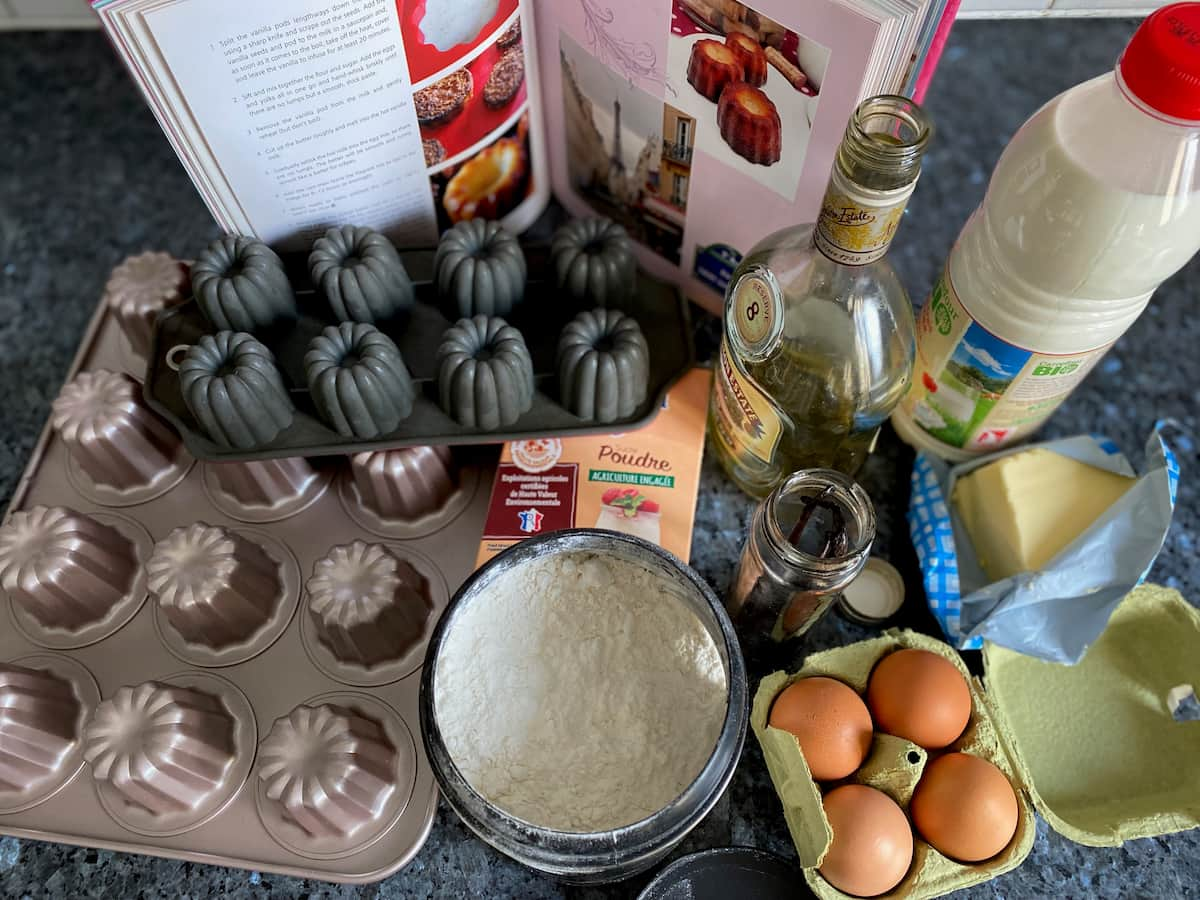
What is a Canelé Made of?
The canelé is made from a few simple ingredients: whole milk, plain flour, organic eggs, egg yolks, sugar and a little unsalted French butter.
However, cannelés are only authentic if made with good vanilla pods/beans.
If you can't find good pods or beans, then I suggest vanilla powder or paste or a top quality extract. Never use aromas, as they are so synthetic and the resulting flavour will be disappointing.
Get my tip how to store vanilla beans/pods and make them extra sticky
All in my recipe post for Confiture de Lait and How to Store Vanilla Beans.
Best Rum for Canelés
Like quality vanilla, the best canelés use the best quality dark rum you can find.
I've made this many times with regular white rum. Even although little is used, cheaper clear rum doesn't give the cakes the best caramelised taste.
So, the darker rum used, the better - budget permitting. I was lucky enough to be gifted a bottle of Jamaican Appleton Estate from my parents. It's so incredible, I shouldn't be baking cakes with it - or should I? Yes.
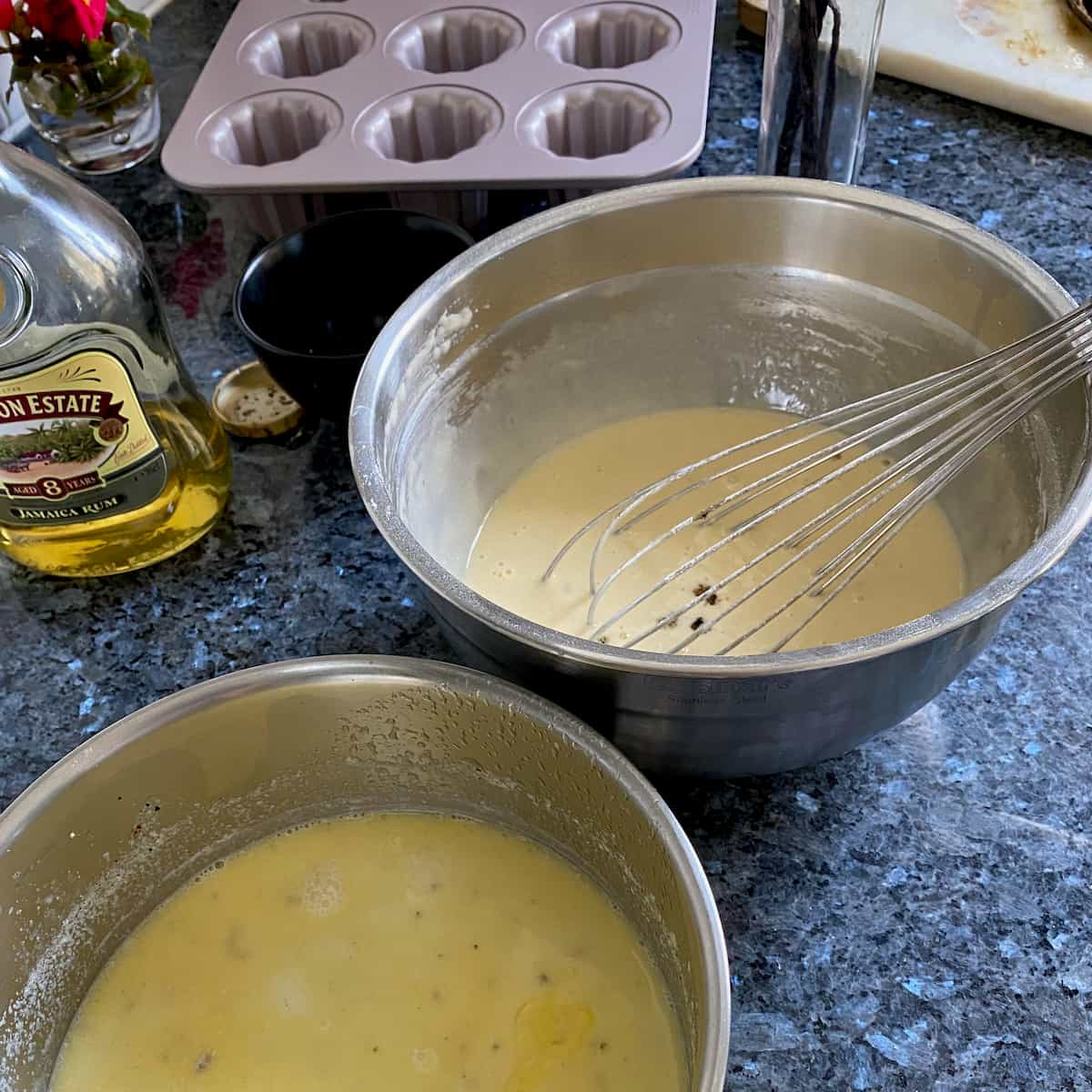
Easy Canelé Recipe - Step by Step
As you can see from the cannelés card below, this recipe is very straightforward.
The cakes' batter is best made the day before. Vanilla pods/beans (or powder) are heated and infused in whole milk then butter is melted in.
Meanwhile, in another bowl, eggs and yolks are whisked together with the flour.
To avoid any lumps (like the method for crêpes), the buttery vanilla milk is gradually added to the flour and egg mix. Once whisked until smooth, it's covered and left in the fridge overnight.
Next day, it's just a matter of whisking the batter all together again (there's a film that forms which is normal) and pour into the moulds. Bake for about an hour, depending on the size of your tins.
Cannelés - Troubleshooting
Follow the recipe below (extract from my book) to the letter and there should be no problems. However, here are a few tips to help troubleshoot canelés.
- If they come out too golden, they are not ready yet. Don't be afraid to take them out of the oven to check them until they look quite dark.
- They're warm and gooey inside. The cannelés have either not been cooked enough and/or not left to thoroughly cool and set.
- They stick to the moulds. I thoroughly recommend using non-stick metallic moulds, now easy to find on the internet and in baking stores. They will easily slip out of the moulds no problem with this canelé recipe without beeswax.
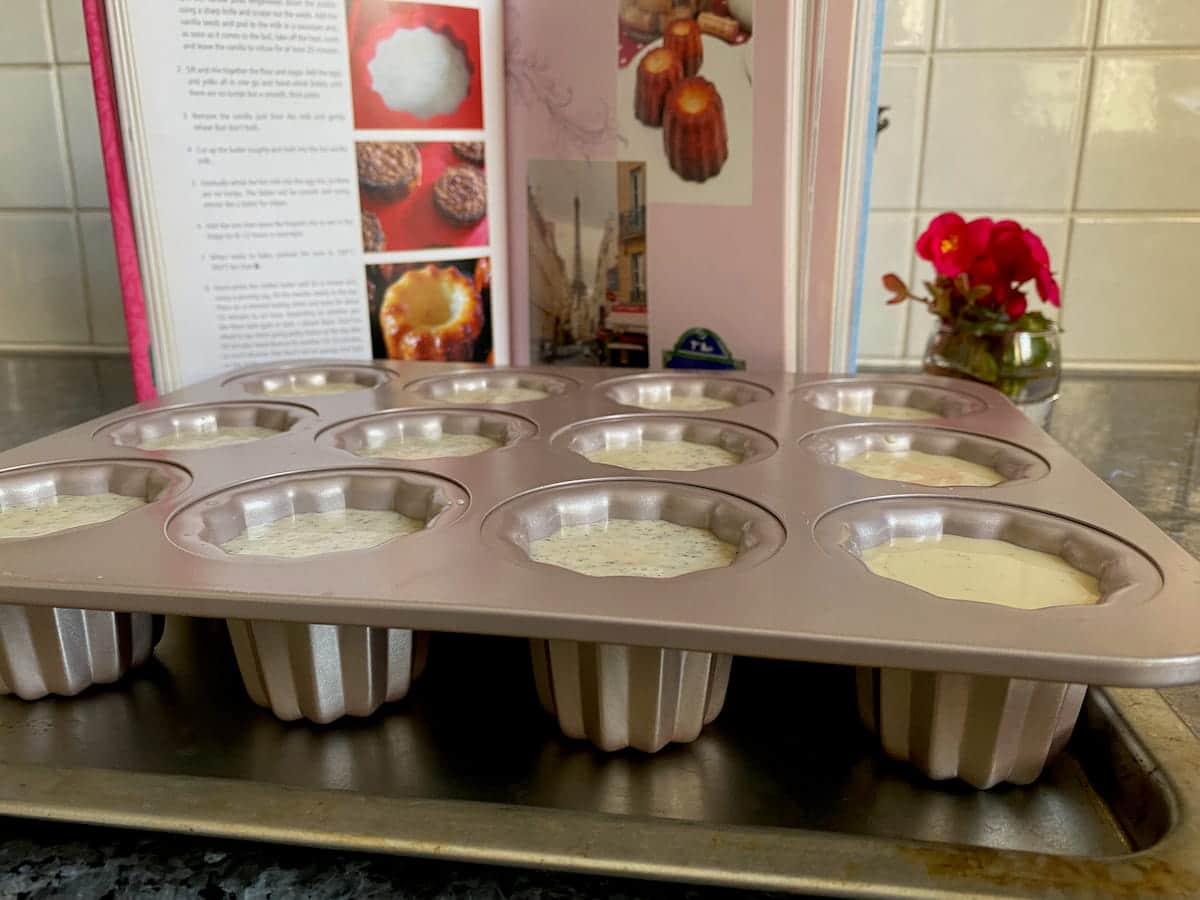
Cannelés Moulds
The traditional French canelé recipe is made with copper moulds. French pastry chefs stipulate greasing them with beeswax although it's easier to spray them with culinary non-stick oil. Alas, not only is culinary non-stick oil not healthy, authentic copper moulds are very expensive and so I adapted the recipe to bake them in silicone canelé moulds without beeswax.
Silicone moulds are perhaps not quite as "pro" as the classic copper, but they are easier to find, easier to wash, and they are more budget friendly. What's more the final product tastes just as good! Just ensure that you bake them long enough.
Since my recipe book was published, I am also happy to have found non-stick metallic cannelés moulds, which some of you may have seen on my Instagram and Facebook pages. As they are slightly bigger than the silicone moulds, baking time needs to be increased to about an hour and a quarter.
Some moulds have a deeper hollow (depression) at the top, making the cakes a bit lighter at the concave centre which is perfectly normal. Other moulds are straighter at the top, making a more even and darker cake throughout.
How you like your cake (extra dark to slightly less dark) is a question of personal preference.
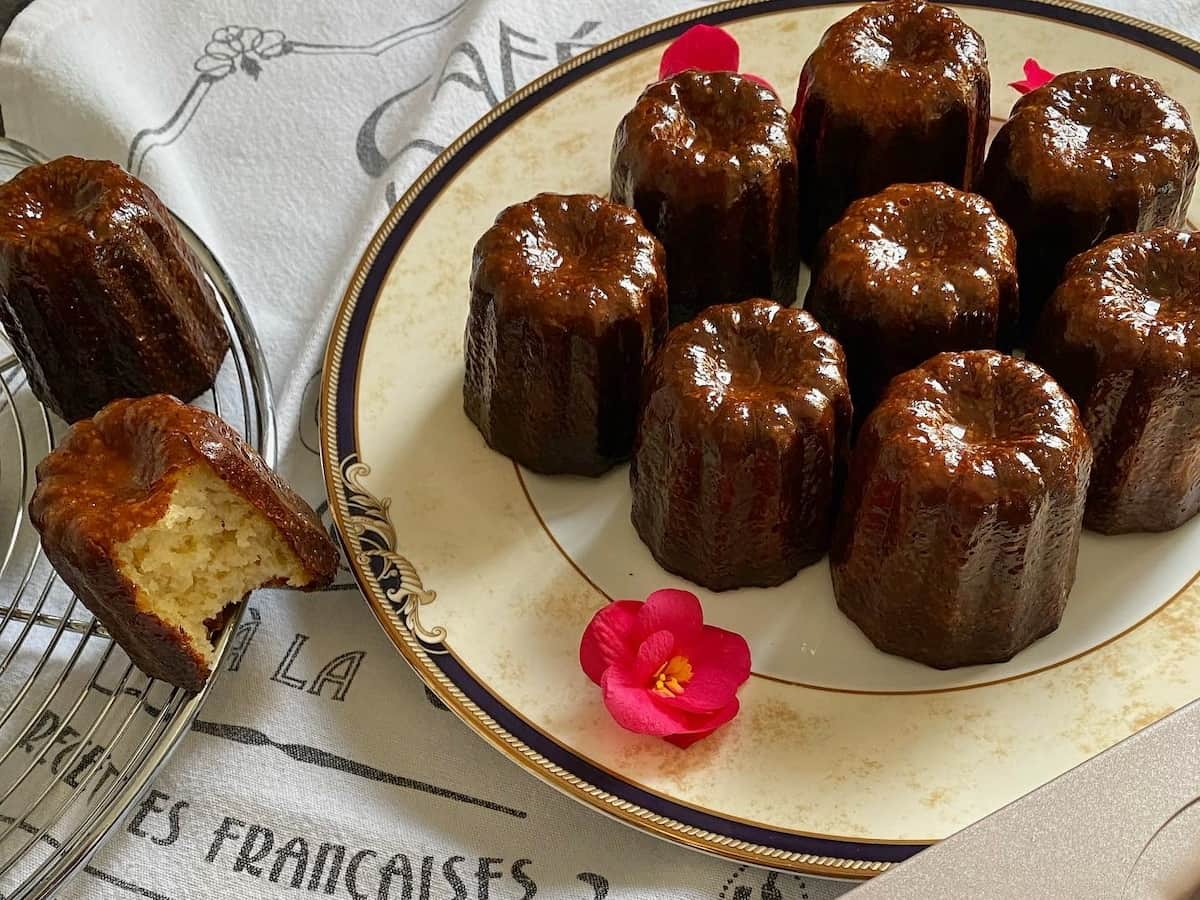
How do you Eat Canelés?
Canelés are best served at room temperature and enjoyed mainly at teatime with tea, coffee or French hot chocolate. For tea amateurs, in my book, I suggest serving with either a Ceylon or Keemun tea to accompany the caramelised flavours of the vanilla and rum.
They also make a great teatime treat during the festive season. Sometimes we even like them for breakfast or at brunch. Although there's rum in them, the oven temperature is so hot that the alcohol disappears but leaves a beautiful flavour.
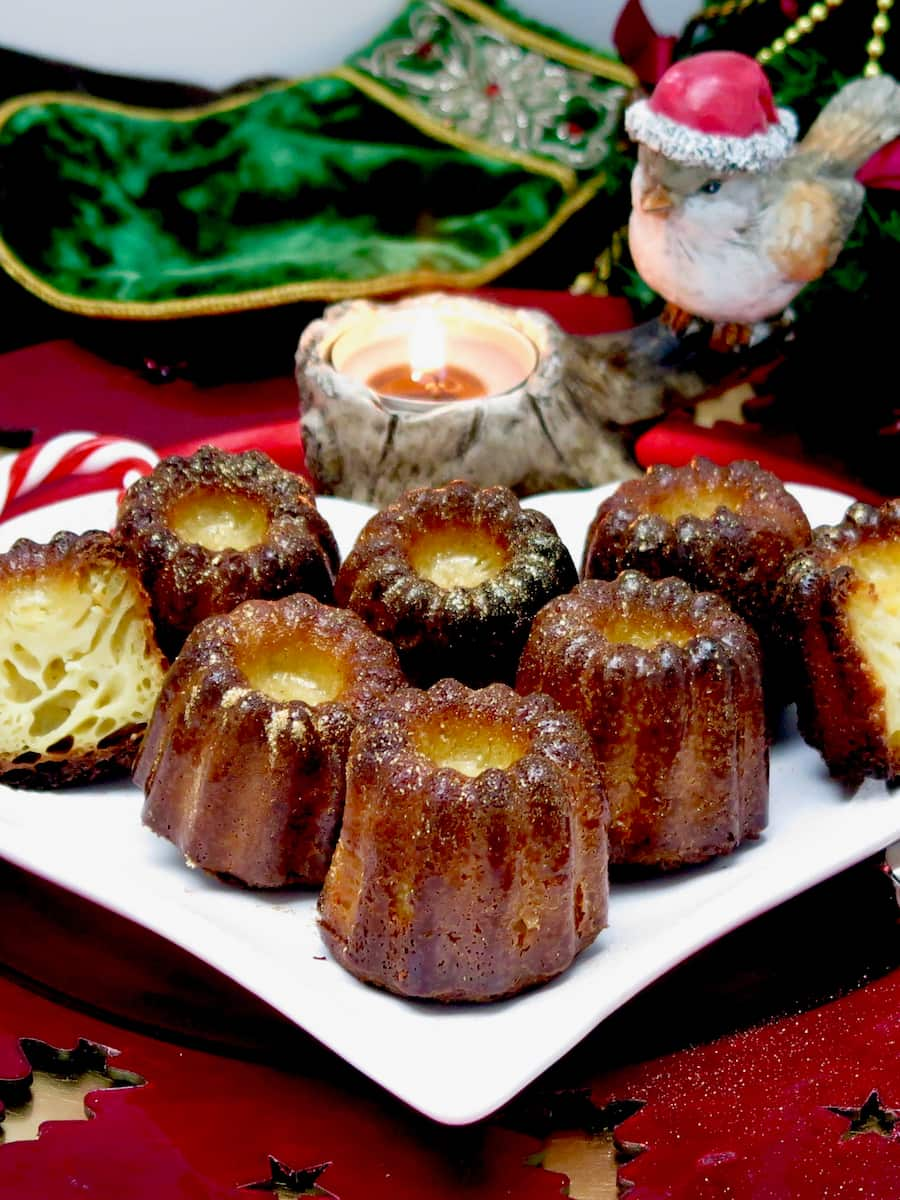
This canelé recipe also makes ideal festive food gifts.
Speaking of gifts, don't forget to order your copy of my easy French pastry recipe book, 'Teatime in Paris', published by Waverley Books - with many more treats!
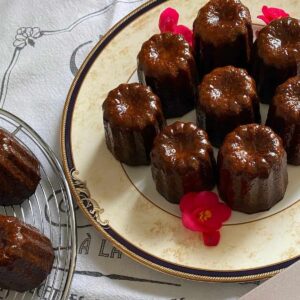
Canelé Recipe (Cannelés de Bordeaux)
Equipment
- non-stick metallic canelé moulds
Ingredients
- 2 vanilla pods/beans
- 500 ml (18 fl oz/2 cups) whole milk
- 120 g (5½oz/1 cup) plain flour (all-purpose)
- 200 g (7oz/1 cup) sugar
- 2 eggs organic
- 2 egg yolks organic
- 50 g (2oz/ 3 tbsp) butter unsalted
- 3 tablespoon dark rum
Instructions
The Day Before (or 8 hours before baking)
- Split the vanilla beans/pods lengthways down the middle using a sharp knife and scrape out the seeds. Add the seeds and pod to the milk in a saucepan and, as soon as it comes to the boil, take off the heat. Cover and leave the vanilla to infuse for at least 20 minutes.
- Sift and mix together the flour and sugar. Add the eggs and yolks all in one go and hand-whisk briskly until there are no lumps but a smooth, thick paste.
- Remove the vanilla pod from the milk and gently reheat (but don't boil).
- Cut up the butter roughly and melt into the hot vanilla milk.
- Gradually whisk the hot milk into the egg mix, so there are no lumps. The batter will be smooth and runny, almost like a batter for crêpes.
- Add the rum then leave the fragrant mix to rest covered in the fridge for 8-12 hours or overnight.
Next Day
- When ready to bake, preheat the oven to 180°C fan/200°C/400°F/Gas 6.
- Hand-whisk the chilled batter well for a minute and, using a pouring jug, fill the moulds nearly to the top. Place on a rimmed baking sheet and bake for about 50 minutes to an hour (or more depending on size of moulds) depending on whether you like them dark gold or dark - almost black. Don't be afraid to see them going pretty brown at the top after 40 minutes; leave them in for another 10-15 minutes, as you'll discover that they'll still be spongy yet firm and light on the inside.
- Turn the canelés out of the moulds straight away and leave to cool completely on a wire rack.
Notes
For more recipes using up yolks, see all my egg yolk recipes.
Looking for recipes with the leftover 2 egg whites? Make any of the following:
- Coconut Macaroons (rochers coco)
- Financiers
- Tuiles.

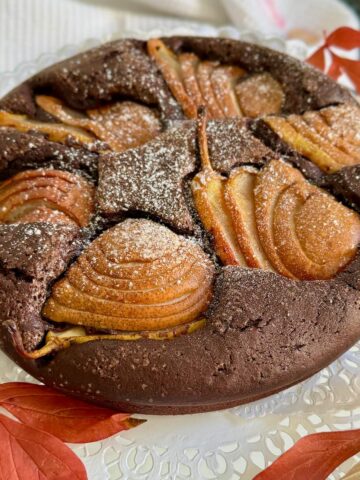
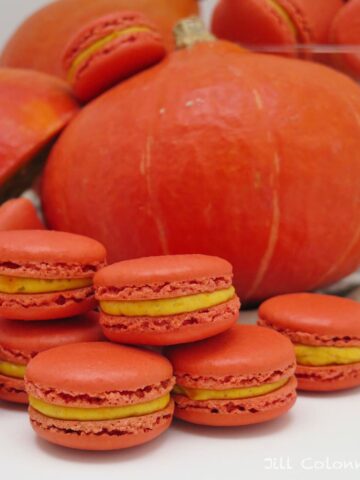
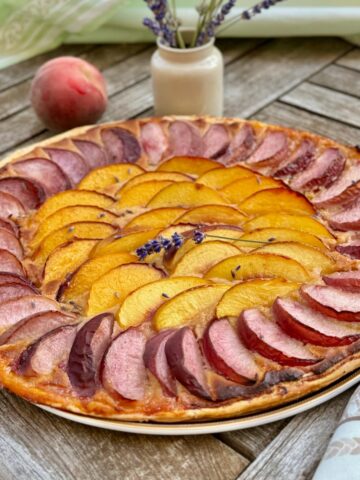
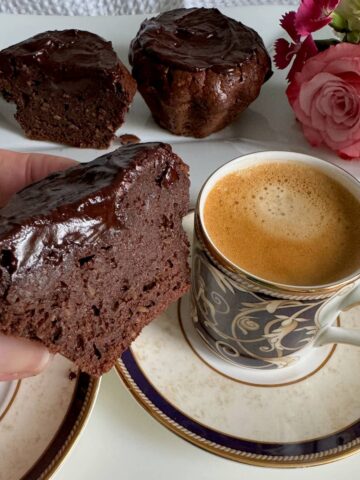

Fernando
Hello Jill. Here writing from Lima- Peru,?. I used almost your same recipe, but with different temperatures, 250 C for 12 minutes and them 40 minutes at 180. However, I always have a same result, the canelé has a hole on the top ( later unmold will be the bottom) . I have some batch to put in the oven at 180 C to see what happen ?
Jill Colonna
Hello Fernando,
Why are you trying to change the temperatures? I'd suggest you stick with the 200°C for at least 50 minutes like I say in the recipe and if they need longer, bake for longer? It's so much simpler sticking to the same recipe, tbh.
Brenda
I used this recipe to make canelés for the first time. They were a hit! Thanks for such clear and concise recipes!
Jill Colonna
So happy to hear this, Brenda - and first time too. Here's to many more canelés and a delicious Christmas!
Denny
Another success Jill. These are just delightful. We decided we preferred them dark and really caramelised on the outside. My other half said they were like the perfect chip, crispy on the outside and lovely and soft in the middle. You have to excuse him ?
Denny (I remembered the stars)
Jill Colonna
So thrilled you loved them also the extra dark and caramelised way. These are the best! Thanks for your feedback, Denny x
Lisa
I had these in Paris last summer! So glad I found your recipe! They turned out perfectly! Merci!
Jill Colonna
Thrilled to hear that, Lisa. Hope they'll make you think of your next trip to France!
Thomasina
Just tasted these. I love them. Thank you Jill.
Jill Colonna
So glad you love them!
Christina Conte
This is THE recipe! Thanks, Jill! Have the copper tins and all! Yours look absolutely gorgeous!
Jill Colonna
Thanks Christina - gosh, you've got the copper! Well have fun making them even more. I ended up not getting the copper as didn't have a copper, haha. No, seriously am happy with the good sturdy silicone and non-stick metallic pans I have.